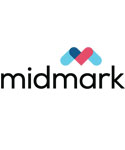Step 2: Client Communication/ Education
Once the initial plan is formulated, pertinent information regarding the anesthetic procedure and pet-specific risk factors should be discussed with the pet owner. Because of safety concerns, pet owners are sometimes hesitant to authorize discretionary procedures requiring general anesthesia, such as preventive dental care or diagnostic imaging. This concern is best alleviated with appropriate communication between the veterinary team and the pet owner, along with education of the pet owner regarding the entire anesthetic process.
Communication with the pet owners should include a full description of the anesthetic procedure and a discussion of potential risks prior to obtaining written, preprocedural consent. In healthy dogs and cats, the risks of anesthetic-related death were estimated to be 0.05% (1 in 1,849, 95% confidence interval [CI] 0.04–0.07%) in dogs and 0.11% (1 in 895, 95% CI 0.09–0.14%) in cats, with death most frequently occurring in the first 3 hr postoperative.6,18 Although this can be concerning, fears can be alleviated with assurance that the anesthesia team will consider multiple factors including health status, breed, age, expected pain level, and surgical plan when making an individualized anesthesia plan for their pet. Tailoring each patient’s anesthetic plan to their specific needs allows the anesthesia team to provide optimum care, including patient-specific anesthetic monitoring performed by a dedicated anesthetist. The anesthesia team should clearly communicate to the pet owner that these measures will decrease the likelihood of anesthetic complications both during the procedure and in the recovery period.
Pain management and patient comfort is generally very concerning to the pet owner and should be emphasized as an integral part of each patient’s anesthetic plan. Pet owners should be reassured that multiple modalities will be used to minimize patient discomfort and stress level prior to leaving home, in hospital, and during recovery at home. The pet may require analgesics and anxiolytics administered at home, and the benefits of these drugs should be explained. The overarching goal for client communication is to ensure that the pet owner is confident that the anesthesia team has the compassion, skills, and technology to provide the safest possible anesthesia for their pet.





